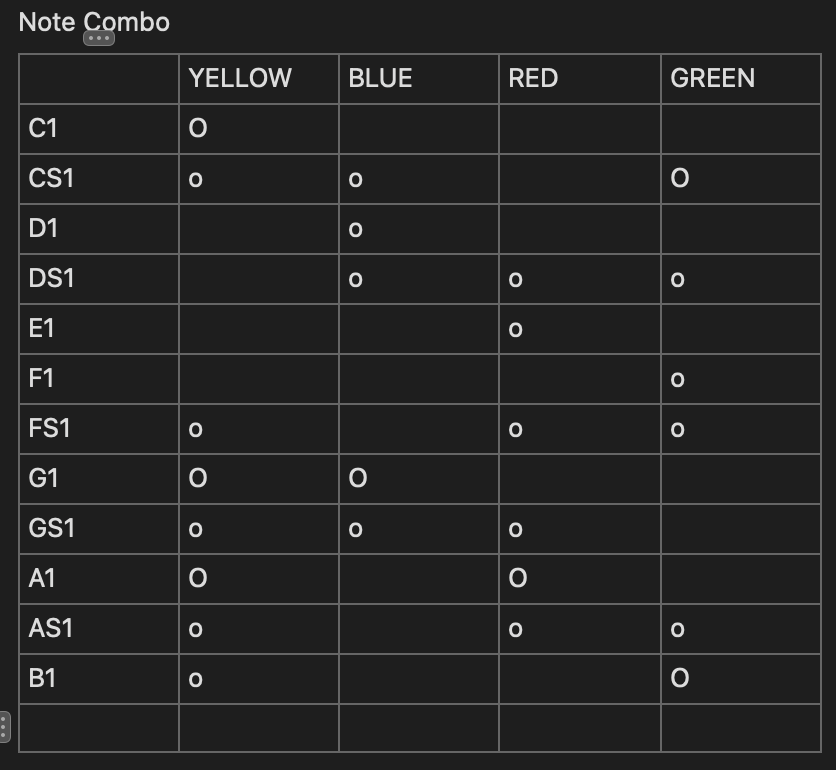Lab with Tone & Speaker
Something's wrong! The audio is too soft
I had some initial trouble with the tutorial on how to make the speaker louder. The transistor needs to be an NPN and paired with 10 Ohm resistor instead of 10k Ohm (the tutorial has a slight mistake).
Delay is essential
Another issue that I encountered is that the speaker does not make any sound if I do not put a delay. I'm still quiet confused of why this may happen, and for now, my solution is just to put a delay as short as possible. I put delay(100), thus the flickering sounding tone.
Application
I'm trying to make a trumpet. It manages to make 4 sounds stably, but alas, when I tried to make combination of sound (just like how brass players press several knobs at once to make more than 3 tones (trumpet has 3 knobs)), it sounds very unstable and the combination after the tone F does not work.
Here is my table of note combination:

Ideas
During last week's class, we discussed on the importance of delay. As an example, we tried out this snippet of code:
void loop() {
digitalInput(2, HIGH);
digitalWrite(2, LOW);
}
The LED that is connected to the Arduino seems to light up just fine. We cannot really see if it is turning LOW. Possible reason is because the LED is flickering in a tempo that is incompatible with human visual perception.
My seat neighbour -- Sophie, mentioned how some LEDs will visibly flicker on camera but not when we see directly with our vision, we just see it as a continous glow. That reminds me of a powerplant I saw in Lamma Island, Hong Kong. There's a LED monitor that shows some real-time information/stats (e.g, present power output, solar irradiance, cumulative electricity generated, and CO2 saved)
Many LED displays and signs are driven with fast electronic modulation (PWM, driver ripple or refresh cycles). the human eye usually integrates that high-frequency variation so it looks steady, but a camera’s frame-rate / rolling shutter can sample the light at different times and reveal banding or flicker (aliasing effect / stroboscopic / temporal light artefact).
Given this, I'm thinking to make an image that is composed of a bunch of LEDs (inspired by Danny Rozin's works) as pixels. There may be 2 groups of LEDs, where one has faster delay and the other has slower delay. Both delay should be tuned so that it looks like they are continuous in human vision, but it should have significant difference to make a difference of flicker speed rate on camera. The faster delay can be the 'black' pixel and the slower can be 'white' pixel.
experimentation with flickering
Elizabeth Kezia Widjaja © 2025 🙂